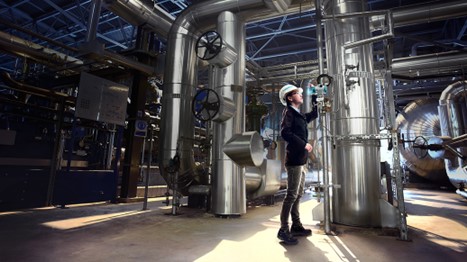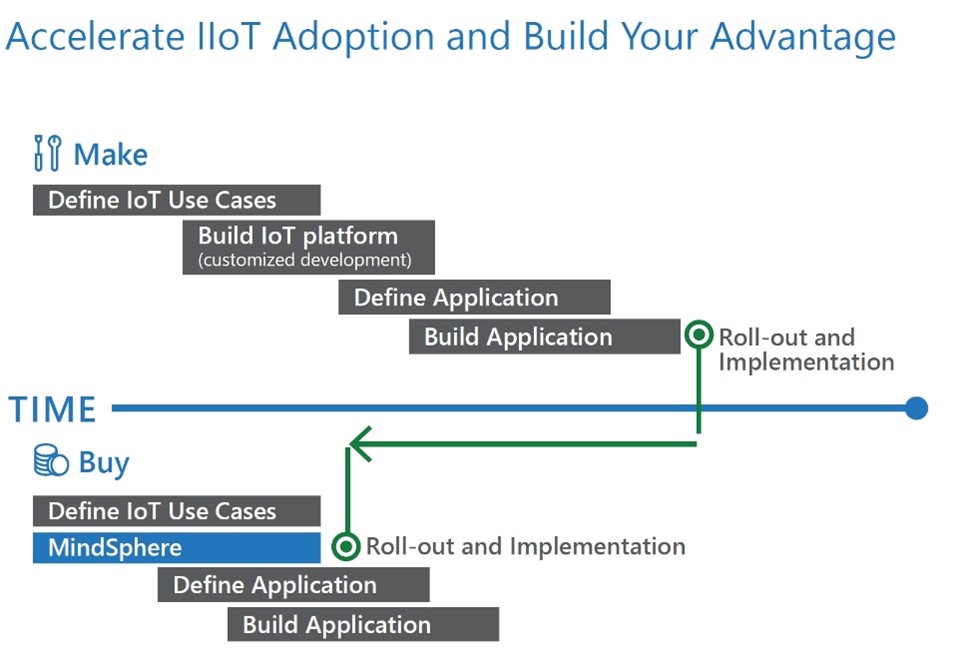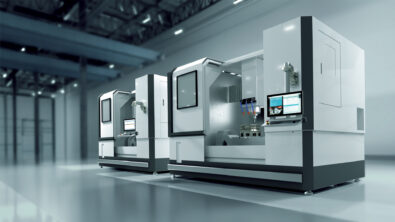Deploy IIoT quickly without distractions: A case study

The project was launched with the best intentions – build a custom IIoT solution to fend off fierce competition in the pump and valve equipment manufacturing industry.
For one renowned pump and valve maker, deploying an IIoT solution would allow them to monitor, service and analyze their own operations and performance and extend these capabilities as new and differentiating services to customers.
The full case study can be found in our joint Microsoft and Siemens Make vs. Buy white paper.
In an attempt to move quickly, the company decided to develop the project in-house rather than buy a commercially available solution. After establishing the project scope and a timeline, the internal IT group got to work.
The prototype IIoT infrastructure came together quickly and was considered successful. They were able to monitor hardware and interpret the data on the testbed.
Over the next 18 months, however, the project came to a halt as the complexities of moving the project into production illuminated the company’s limitations.
Three Challenges to Building Your Own IIoT Platform
When the pump and valve company initially started the project, it focused on the core functionality of the IIoT initiative and not on the larger landscape of technical considerations when building an IIoT platform.
For the IT group, the interface between devices, equipment, and machines it produced was familiar territory – the hurdle they couldn’t overcome was how to interpret and process the data safely and at scale.
These are three challenges the company did not anticipate:
- Processing cloud data: The IT group had a limited understanding of selecting advanced cloud services needed to collect, process, analyze and visualize data.
- Data security: The responsibility of handling the associated data access and security on behalf of customers was a new burden the company was unfamiliar with.
- Continuous development: From a day-to-day perspective, the company’s DevOps processes were not equipped to handle the development and maintenance of a custom-built or open-source IIoT platform.
Finding a pre-built IIoT Solution that worked
The challenges the company faced in this situation are not unique. The path toward implementing IIoT is often tumultuous as different stakeholders across the company seek to ensure each of their priorities is met.
Making an IIoT platform in-house is not impossible, but a custom solution forgoes many of the benefits buying a solution holds. An off-the-shelf IIoT product, like MindSphere® by Siemens on Microsoft Azure, will offer far more industry-specific and cross-industry applications than an internal IT team could build.
With a pre-built IIoT solution, it’s possible to get a project off the ground quickly while maintaining readiness for future expansion and adoption. Additionally, the MindSphere Store offers an extensive partner ecosystem that creates vertical and use-case-specific applications that can be implemented immediately.

For this pump and valve manufacturer, the company intended to not only monitor its equipment and manufacturing facility but also offer intelligent monitoring services to its customers.
By utilizing a commercial IIoT product, the company could future-proof its efforts by avoiding fundamental errors in its application architecture and having the latitude to change the application’s capabilities to meet customer needs.
Eliminate distractions with a pre-built solution
Once the company decided to invest in an IIoT platform, they chose MindSphere on Microsoft Azure. This combination allowed the IT group to rebuild its previous work and deploy a working IIoT solution in three weeks.
Here are some of the features they were able to deploy using MindSphere on Azure:
- Connection: In just a few days, the company could connect its machines to the low-code application and start asset modeling.
- Custom designed: The group delivered tailored condition tracking for each customer using MindSphere subtenant and data roll-up capabilities.
- Security at scale: Data access and security control through Azure. This helped protect internal and customer IIoT data.
- Consistent experience: Collaboration between its services and product engineering departments to analyze operation results.
The opportunity cost of building an IIoT solution is high. In many cases, the investment can be made upfront with a proven, scalable solution like MindSphere on Azure or on the backend of a project when supporting a custom-built product.
For the pump and valve manufacturer, it became obvious the commercial solution was the solution after it spent significant development time and resources.
Read more about how companies are making the decision to implement IIoT solutions in the Make vs. Buy white paper.

